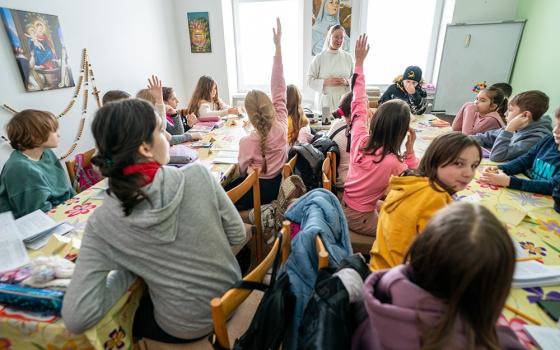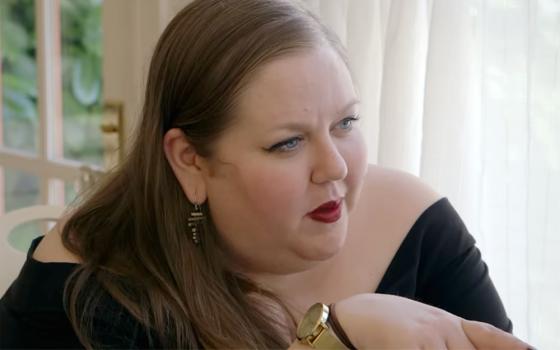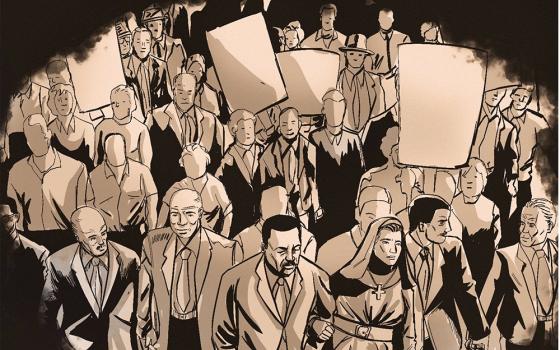By JOHN L. ALLEN JR.
Rome
According to reports presently making the rounds, Benedict XVI appears set to issue a document that would liberalize permission for celebration of the Mass in use prior to the Second Vatican Council (1962-65), referred to in popular parlance either as the “Latin Mass” or the “Tridentine Rite.”
Though several sources have confirmed that a text is on its way – generally held to be a motu proprio, or an exercise of the pope’s personal authority – there are varying accounts of what it might contain. Whether it will amount to a “universal indult,” meaning blanket permission for any priest to celebrate the older Mass at any time and in any place, remains to be seen, though most observers seem to believe the authorization will be somewhat more circumscribed, perhaps dependent upon a minimum number of faithful who request it.
Most sources expressed caution in drawing conclusions about the implications of the document before it appears.
Assuming a document is eventually issued, it appears to have been worked out at the most senior levels, bypassing many normal channels. Officials in the Congregation for Divine Worship and the Discipline of the Sacraments, the Pontifical Council for Legislative Texts, the Congregation for the Doctrine of the Faith and the Ecclesia Dei Commission this week all told NCR that they had not been consulted about the text, and in many cases learned about it for the first time from accounts on blogs or in the press.
Speaking on background, Vatican officials repeatedly stressed two points about the older Mass:
•tNothing prevents any priest under current law from celebrating the post-Vatican II, “new” Mass in Latin, and in some cases traditional Catholics don’t notice the difference between the old Mass and the new Mass celebrated reverently in Latin.
•tEven if permission for the older Mass is liberalized, it’s unlikely to significantly alter the church’s liturgical practice. The number of Catholics committed to the old Mass, one official said, is less than one percent of the global Catholic population, and most of them have already found parishes or religious orders which provide it. Hence, these officials said, it’s unlikely that “pent-up demand” on a large scale will be unleashed by the new decree.
Vatican sources stress that whatever the document may say, it does not mean that the church is "going back to the Latin Mass." While the pre-Vatican II Mass may become somewhat easier to find, the vast majority of weekly and Sunday liturgies around the world will still be celebrated according to the post-Vatican II rite in the vernacular languages.
While the document may be interpreted in some quarters as a conservative move, sources in Rome said that it's actually more of a pastoral concession in an attempt to heal the only formal schism after Vatican II, which involved traditionalist Catholics attached to the old Mass.
Whether this gesture will be enough to convince them to return, however, remains to be seen. In recent years, the leadership of the Society of St. Pius X, the main body of breakaway traditionalists, has insisted upon two preconditions for any return. One is a "universal indult" for celebration of the old Mass, the other is a right of dissent from teachings of Vatican II which they consider faulty, such as the documents on ecumenism, inter-faith dialigue, and religious freedom. Nothing suggests the new document will address that second point.
Uncertainty as to the fate of the old Mass has been circulating for some time.
During the March 2006 consistory, a gathering of cardinals from around the world, the question of the pre-Vatican II Mass was on the agenda. At the time, several cardinals told NCR that a variety of views were expressed, with no clear consensus.
At the Synod of Bishops on the Eucharist in October 2005, by way of contrast, there was little discussion on the issue. Colombian Cardinal Darío Castrillón Hoyos, president of the “Ecclesia Dei Commission” set up to promote reconciliation with traditionalist Catholics, proposed during floor debate that the synod’s final message contain a gesture of outreach to Catholics attached to the old Mass, but that request went unheeded.
A decision to liberalize celebration of the pre-Vatican II Mass, however, would be consistent with Pope Benedict’s appreciative view of the older liturgy, as well as the conviction of senior Vatican officials that the adoption of a new Mass after Vatican II never meant that the older liturgy was abolished.
Most recently, this view was expressed by Archbishop Albert Malcolm Ranjith, Secretary of the Congregation for Divine Worship, in an interview in the September issue of 30 Giorni: “The fact that the Holy See recently approved the creation in Bordeaux, France, of a society of apostolic life of pontifical right characterized by the exclusive use of the pre-conciliar liturgical books shows unequivocally that the Mass of St. Pius V cannot be considered abolished by the so-called new Missal of Paul VI,” Ranjith said.
Ranjith’s reference to a new religious community was to the Institute of the Good Shepherd, erected to provide a home for Catholic traditionalists who previously were part of the schismatic movement launched by the late French Archbishop Marcel Lefebvre.




